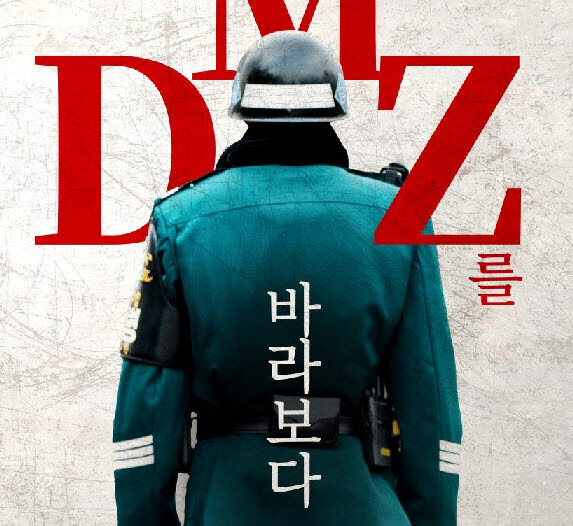
The DMZ Museum (Director Kim Gyu-sik) in Gangwon Special Self-Governing Province, South Korea, has announced the upcoming special exhibition, "Looking at the DMZ," showcasing the donated photographs of acclaimed documentary photographer Park Jong-woo. The exhibition will run from April 18th to July 27th, offering a poignant visual journey into the Demilitarized Zone (DMZ) through the lens of an artist who has dedicated decades to documenting its unique landscape and human stories.
Park Jong-woo stands as a pivotal figure in Korean documentary photography, notably as the first civilian photographer to gain access and extensively record the interior of the DMZ following the Korean War armistice. For years, he has meticulously chronicled the distinctive scenery born from the peninsula's division, the lives of the people residing in its vicinity, and the resilient natural environment that thrives within its boundaries. His work provides an invaluable historical and cultural record of a region that remains both geographically and politically significant.
The upcoming exhibition at the DMZ Museum features a selection of works generously donated by Park Jong-woo following his receipt of the prestigious 18th Donggang International Photo Festival Award in 2019. These photographs offer a profound insight into the DMZ's natural beauty and the human element within its unique context.
The exhibition is thoughtfully curated into three thematic sections: "After That Day," "Standing on the Border," and "The Scenery Beyond."
"After That Day" delves into the lingering remnants of the Korean War etched onto the Korean Peninsula. Through Park's lens, viewers will encounter visual narratives of the physical and emotional scars left by the conflict, serving as a stark reminder of the peninsula's divided past. These images may include remnants of military installations, abandoned structures, and landscapes bearing the marks of war.
"Standing on the Border" focuses on the lives of the individuals who reside in the vicinity of the demarcation line. These are the communities that live daily with the reality of division, their lives intertwined with the unique circumstances of the DMZ. Park's photographs will likely capture their daily routines, their resilience, and their perspectives on living in such a historically charged and geographically constrained area. This section may explore the agricultural practices, local traditions, and the unique blend of tension and normalcy that characterizes life near the border.
"The Scenery Beyond" presents the resilient and often breathtaking natural landscape that has flourished within the DMZ's relative isolation. Despite the human conflict that led to its creation, the DMZ has inadvertently become a sanctuary for biodiversity. Park's photographs in this section are expected to showcase the pristine ecosystems, diverse flora and fauna, and the serene beauty that exists in stark contrast to the political tensions that define the region. This may include images of migratory birds, rare plant species, and the untouched wilderness that has developed over decades of limited human interference.
Director Kim Gyu-sik of the Gangwon Special Self-Governing Province DMZ Museum expressed his hopes for the exhibition, stating, "We hope that this special exhibition of donated artifacts will further promote a culture of donation. By reflecting on the enduring scars of the Korean War that remain within the Demilitarized Zone, we also hope that visitors will have an opportunity to contemplate the significance of unification and peace."
The DMZ Museum itself serves as an important institution dedicated to preserving and interpreting the history, ecology, and cultural significance of the Demilitarized Zone. Located in Gangwon Special Self-Governing Province, a region that directly borders the DMZ, the museum plays a crucial role in educating the public about this unique and historically significant area. It houses a collection of artifacts, photographs, and exhibits that tell the story of the Korean War, the division of the peninsula, and the ongoing efforts towards peace and reconciliation.
Park Jong-woo's work has been widely recognized for its artistic merit and its profound documentary value. His photographs transcend mere documentation, offering a nuanced and often deeply moving portrayal of the DMZ and its people. His commitment to long-term projects and his empathetic approach to his subjects have established him as a leading voice in Korean documentary photography. His decision to donate a significant portion of his work to the DMZ Museum underscores the importance of preserving these visual records for future generations.
The exhibition "Looking at the DMZ" promises to be a significant cultural event, offering visitors a rare glimpse into a region that remains largely inaccessible and shrouded in geopolitical complexities. Through Park Jong-woo's powerful imagery, viewers will be invited to reflect on the human cost of division, the resilience of nature, and the enduring hope for peace on the Korean Peninsula. The exhibition is expected to attract a wide audience, including those interested in photography, history, environmental conservation, and Korean culture.
The DMZ, a 250-kilometer long and approximately 4-kilometer wide buffer zone, has existed since the 1953 armistice that halted the Korean War. While initially intended as a temporary separation, it has become a heavily fortified border that symbolizes the ongoing division of the Korean Peninsula. Paradoxically, the limited human access within the DMZ has allowed ecosystems to flourish, making it an unintentional biodiversity hotspot.
Park Jong-woo's photographs often capture this duality – the stark reminders of conflict existing alongside the serene beauty of nature. His work serves as a powerful reminder of the complex and often contradictory realities of the DMZ. The exhibition at the DMZ Museum provides a unique opportunity to witness this firsthand through the eyes of a dedicated and insightful photographer.
The museum encourages visitors to attend the exhibition and engage with the powerful visual narratives presented by Park Jong-woo. It is hoped that "Looking at the DMZ" will not only showcase significant photographic work but also contribute to a deeper understanding of the Korean Peninsula's history and the ongoing pursuit of peace. The exhibition runs until July 27th, offering ample opportunity for the public to experience this important collection of photographs.
[Copyright (c) Global Economic Times. All Rights Reserved.]




























